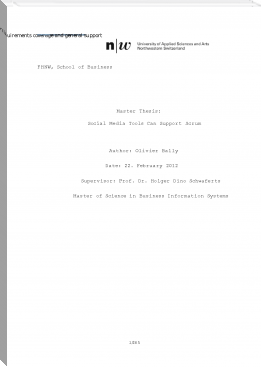Motors and Generators by Amber Beck (ebook reader wifi .txt) 📕

Read free book «Motors and Generators by Amber Beck (ebook reader wifi .txt) 📕» - read online or download for free at americanlibrarybooks.com
- Author: Amber Beck
Read book online «Motors and Generators by Amber Beck (ebook reader wifi .txt) 📕». Author - Amber Beck
Electric appliances in your home make all kinds of daily work easier. Garage door openers, power tools, battery-operated toys, and fans are all powered by motors that work because of forces exerted by electromagnets. The motor uses electrical energy to exert forces that cause motion, thereby producing mechanical energy.
You will also discover that the same electromagnetic forces that turn electrical energy into mechanical energy can also generate electrical energy out of mechanical energy. The large amounts of mechanical energy used to rotate these turbines can generate enough electrical energy for entire cities.
MotorsWhat makes the blades spin on an electric fan? The combined effect of electric currents and magnetic forces turn electrical energy into mechanical energy.
Any time an electric current flows through a wire, the current produces a magnetic field. Engineers use this phenomenon to build motors, such as the ones powering a fan. These motors rely on the forces of magnetic attraction and repulsion to transform electrical energy into the mechanical energy of movement. Take a closer look at a simple electric motors. motor: a machine that converts electrical energy into mechanical energy The motor in this fan transforms electrical energy into mechanical energy of movement: the turning of the fan blades.
Although their basic components are the same as the simple, battery-powered motors, larger motors provide more power, doing more work each second. A wide variety of electric motors is used to power any number of mechanical movements. A spinning fan, a turning drill bit, a winding chain of a garage door opener, and the cutting gears of an electric can opener are all powered by electric motors.
The motions of these tools are limited only by their mechanical soundness and by their need for electrical current. To maintain an electric supply, most electric motors are simply plugged into a wall outlet, while battery-operated motors can be run on rechargeable batteries.
Some motors, like the one in this battery-operated drill, can be run using rechargeable batteries.
Some motors, like the one in this electric can opener, operate by plugging the cord into a wall outlet to receive a steady stream of electric current.
Electricity from Motion
To generate large amounts of electricity, generators rely on powerful sources of mechanical energy. Many power plants use high winds, steam created by burning coal, or large amounts of rushing water to exert enough force to rotate giant turbines. The turbines provide mechanical energy to the generator, which transforms it into electrical energy that can be used to power entire cities. Use this animation to see how a turbine and generator function in a hydroelectric power plant.
1. The water behind the dam contains stored energy. 2. When the water flows through the pipe, stored energy is converted into motion.3. Energy from the moving water turns the blades of the turbine.4. The turbine turns a generator, converting motion to electrical energy
5. The electrical energy travels along power lines to where it can be used.
Check Your KnowledgeMotors and generators both involve electric current, magnetic fields, and rotating loops of wire. The purpose in one case is to produce electric current and in the other to use electricity to power tools, like fans.
Answer the following questions about motors and generators.
What components are needed for a generator to produce electric current? Answer:A loop of wire has to be rotating in a magnetic field. Describe motors and generators in terms of energy input and output. Answer:A motor uses electrical energy to run a current through a wire in a magnetic field. This causes the wire to magnetize. As it is attracted and repelled by the permanent magnet, the coil turns and makes mechanical energy.
A generator uses mechanical energy to turn the wire loop in the magnetic field. This causes electric current to flow, creating electrical energy.
Imprint
Publication Date: 12-15-2020
All Rights Reserved
Dedication:
I dedicate this to K12!





Comments (0)